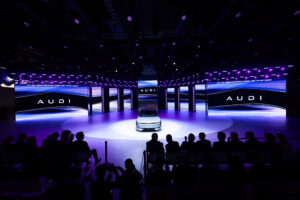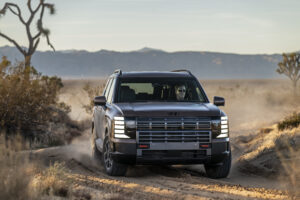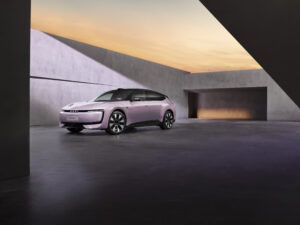Toyota Aqua Design Development with lots of Sketches
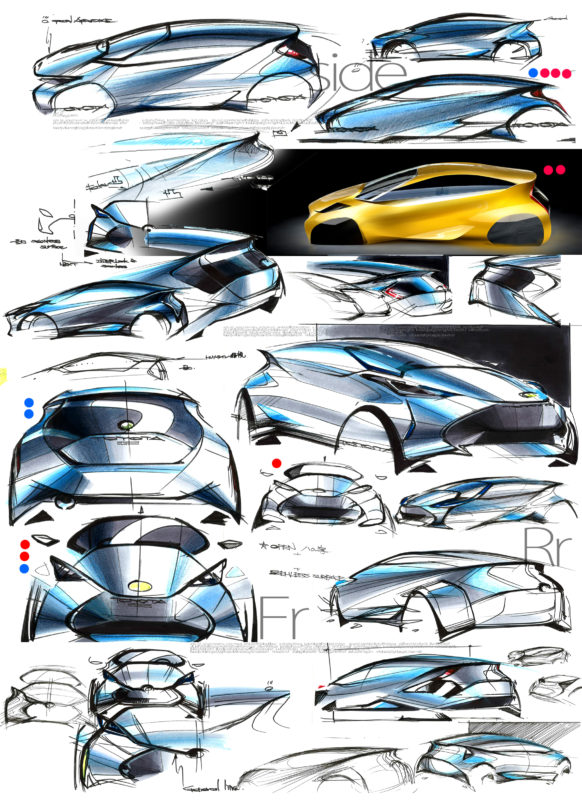
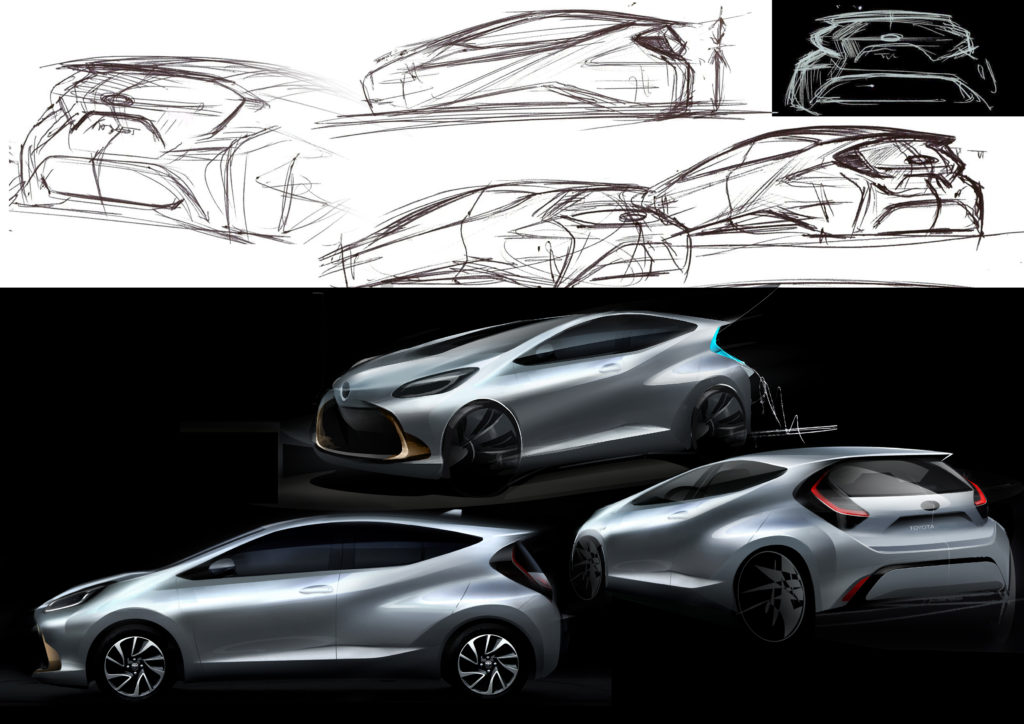
Aiming to achieve carbon neutrality, Toyota has been making ever-better cars based on the concept of “introducing sustainable vehicles practically to the market”.
As part of this process, the first-generation Aqua came to life at the Iwate Plant of Toyota Motor East Japan, Inc. (then, Kanto Auto Works, Ltd.) in 2011, the year of the Great East Japan Earthquake. With a desire to greatly increase hybrid-vehicle familiarity, as well as in pursuit of “creating a compact car for the next 10 years”, the Aqua combined the superb practicality of a compact car with the outstanding fuel efficiency and quietness of a hybrid electric-only model at an affordable price. Since its launch, more than 1.87 million units of the Aqua have been cherished by their owners, contributing to an overall reduction in CO2 of approximately 12.4 million tons.
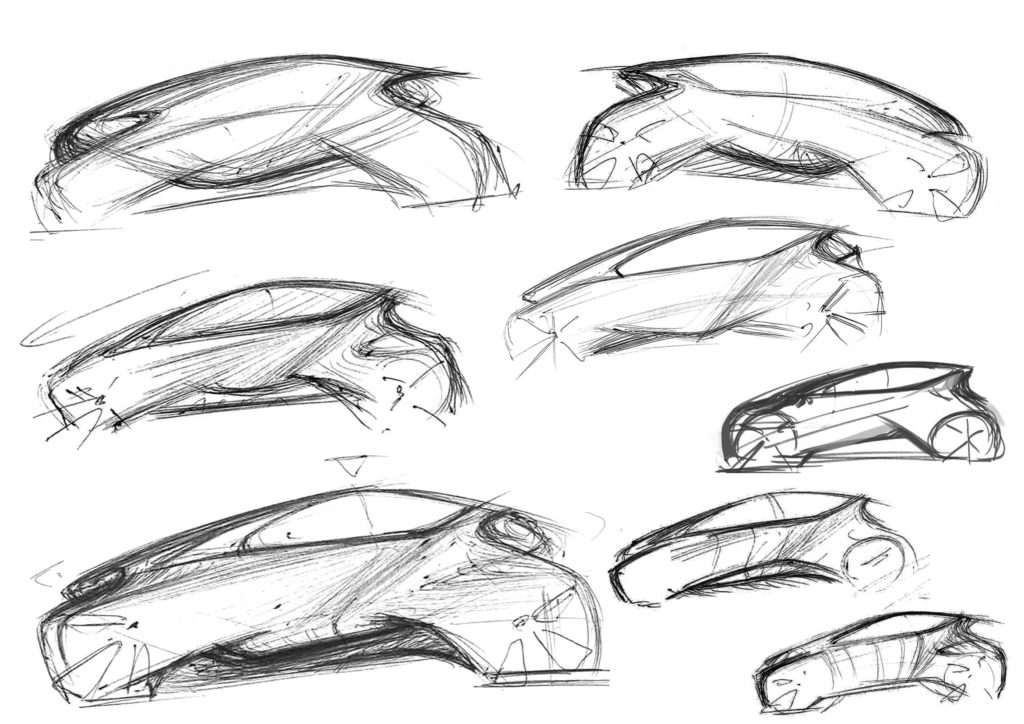
The all-new Aqua inherits and refines the roles undertaken by its predecessor, and, in pursuit of once again “creating a compact car for the next 10 years”, in addition to a suite of features designed to enable customers to drive their vehicles every day with joy, safety, peace of mind, and comfort, it also realizes superior environmental performance. In addition to excellent environmental performance such as in the form of low fuel consumption at 35.8 kilometers per liter*5, it achieves high-quality driving performance by way of comfortable acceleration. Also, as can be expected, the Aqua comes with a full range of carefully considered equipment, including as standard on all grades a 100-volt (alternating current)/1,500-watt accessory power outlet and an emergency power supply mode that allows electricity to be drawn from the vehicle for external use during blackouts.
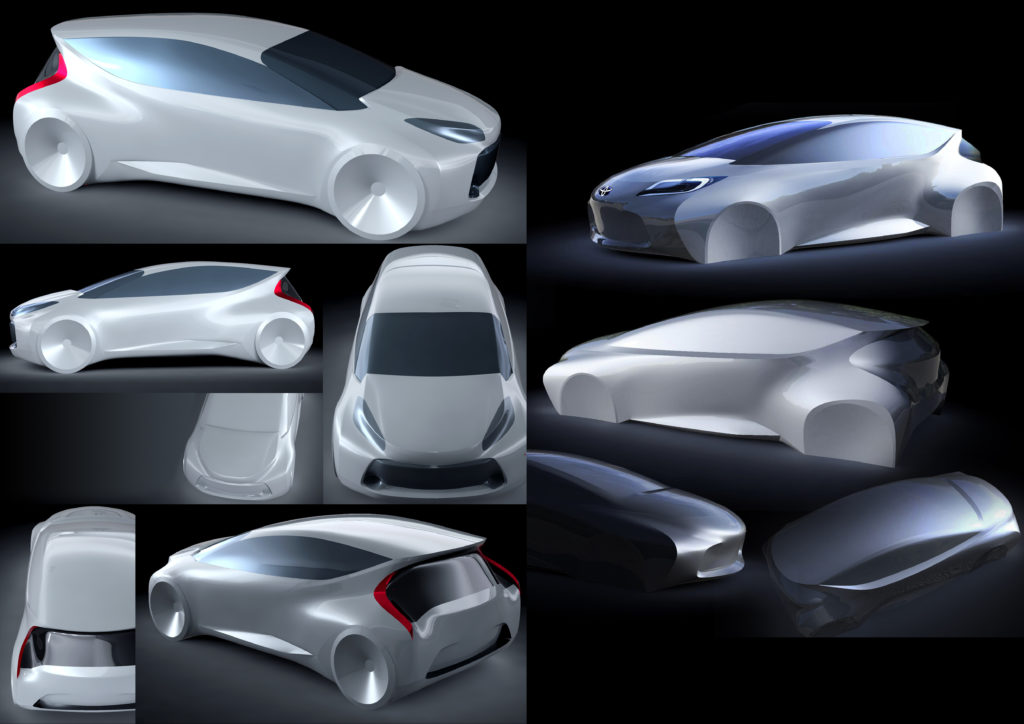
Toyota espouses the concept of a “home planet” and believes it has a duty to bequeath this beautiful Earth to future generations. Going forward, the company will continue to engage in making ever-better cars to contribute to the realization of carbon neutrality and the production of happiness for all through automobiles.
Details of the all-new Aqua are outlined below.
Combining the comfortable, refined ride and outstanding environmental performance of an electrified vehicle
Innovative battery technologies
The all-new Aqua is the world’s first vehicle to use a high-output bipolar nickel-hydrogen battery as an electric drive battery*6. Compared to the nickel-hydrogen battery equipped to the previous-generation Aqua, the new battery realizes approximately twice the output; it also delivers improved accelerator responsiveness, and enables smooth, linear acceleration from low speeds. In addition, the speed range at which the all-new Aqua can operate on electrical power alone has been expanded, allowing the vehicle to run on electricity alone, without engaging the engine, in a wide variety of urban scenarios.
A new driving experience unique to a hybrid electric vehicle (HEV)
The all-new Aqua is the first Toyota model to feature the Comfort Pedal*7. By selecting the Power+ Mode, drivers only have to relax pressure on the accelerator pedal to generate regenerative braking force, and smoothly slow the vehicle. The Comfort Pedal reduces driver burden by lessening the frequency with which accelerator and brake pedals have to be pressed, and also results in responsive feedback. The latest generation is also the first Aqua to adopt E-Four, which provides drivers with greater peace of mind when driving on snow-covered roads.
Thanks to a highly efficient 1.5-liter Dynamic Force Engine and an optimized HEV system, the all-new Aqua not only achieves compact class-leading fuel economy of 35.8 km/L, but combines this with the comfortable driving characteristics of an HEV. Power+ Mode in operation (left) and pedal switching frequency (right)
Power+ Mode in operation (left) and pedal switching frequency (right)
Cutting-edge safety and security functions
The latest active safety package
The Aqua is a model intended for frequent use in its owners’ everyday lives, and Toyota believes it ought to be equipped with an abundance of safety and security functions. The all-new Aqua is equipped as standard with the latest edition of Toyota Safety Sense, which is replete with cutting-edge active safety functions: its pre-collision safety functions feature an expanded scope of operation, now covering accidents that occur when turning left or right at intersections; Full Speed Range Radar Cruise Control makes car outings more comfortable; Lane Tracing Assist (LTA) provides steering support to keep the vehicle centered in its lane; and Plus Support controls sudden acceleration due to misapplication of the accelerator pedal.
For the first time in a Toyota compact car, the all-new Aqua is equipped with Toyota Teammate Advanced Park and Parking Support Brake. Toyota Teammate Advanced Park provides support for all parking operations, including steering wheel, brake, accelerator, and gear shifting operations; in addition to detecting stationary objects in front of and behind the vehicle, the latest version of Parking Support Brake is capable of detecting stationary objects on either side, and provides alerts and brake control to help avoid collisions. In this way, the all-new Aqua delivers driver support in a wide range of scenarios, including when driving and parking. Advanced Park operation
Advanced Park operation
All grades are equipped with power supply functions, for use in times of disaster and other emergencies
An accessory power outlet (AC100 V / 1,500 W) and an emergency power supply mode are equipped to all grades as standard. During blackouts and other times of emergency, parking the vehicle and placing it in Emergency Power Supply Mode enables the Aqua to be used to power electrical appliances such as electric kettles and hair dryers. When driving normally, the vehicle can be used to power appliances via its accessory power outlet, and also to charge smartphones and other electrical devices via its in-cabin USB terminals.
A refined body structure and an advanced design
The convenience of a compact car and the refined ride of a high-rigidity body
By using the TNGA (GA-B) platform in the same compact body as before, the all-new Aqua realizes a high-rigidity body, exceptional quietness, and a stable ride. While retaining the same, compact body size ideally suited to Japanese road conditions, the Aqua’s wheelbase has been extended by 50 mm; this provides both greater space particularly for passengers seated in the rear seats, and expands the luggage space, resulting in greater convenience.
An elegant, simple, and class-beating design based on the principle of Harmo-tech (Advanced yet familiar technologies that stimulate the intellect and the senses)
A relaxed, unified cabin silhouette is coupled with rear fenders that extend out to the sides, creating a smart, emotional, and dynamic exterior that befits the Aqua. The vehicle is available in a total of nine, high-quality colors; this includes the newly developed Clear Beige, which delivers a simple, clear impression well-matched to the Aqua’s smart form. Z (Front-wheel drive) (Options shown)
Z (Front-wheel drive) (Options shown)
In the interior, various functions have been placed together to create a simple, clean, and elegant-looking space. Its cabin features soft, synthetic leather-bound ornaments and armrests, and convenient and comfortable synthetic leather power seats, which exceed all expectations; cabin storage has also been cleverly designed with convenience in mind―a tissue box can be stored in the front passenger seat upper box, while a center console sliding tray enables charging cables to be cleanly stowed away. The all-new Aqua also becomes the first Toyota compact car*8 to feature a large, 10.5-inch audio display, delivering outstanding operability and visibility.![Z (Front-wheel drive) (Interior color: Cozy [Black x Dark Navy]) (Options shown)](https://global.toyota/pages/news/images/2021/07/19/1330/005.jpg) Z (Front-wheel drive) (Interior color: Cozy [Black x Dark Navy]) (Options shown)
Z (Front-wheel drive) (Interior color: Cozy [Black x Dark Navy]) (Options shown)
The all-new Aqua is also offered via the KINTO ONE*9 car subscription service; customers can sign up either online or at Toyota dealers. The all-new Aqua is available from just 19,580 yen per month (including tax)*10 when using the seven-year lease plan with added bonus payments of 110,000 yen (including tax)
For further details on the KINTO car subscription service, please visit the KINTO website:
https://kinto-jp.com (Japanese only)
The all-new Aqua is also available as part of the Welcab series, offered in Wheelchair Storage Device, Front Passenger Turn Tilt, and Friendmatic Seat models.
For further information about the Welcab series, please visit the following webpage:
https://toyota.jp/aqua/welcab/ (Japanese only)
| *1 | Toyota’s unique approach to contributing to carbon neutrality by introducing sustainable vehicles practically |
|---|---|
| *2 | Global sales from 2011 to May 31, 2021; includes Prius c units sold in the U.S. |
| *3 | According to a Toyota survey. The amount of CO2 emissions reduced by the Aqua was calculated based on a comparison of the CO2 emissions of the Aqua and compact cars in the same class as the Aqua that run solely on gasoline engines and on the global sales volume of the Aqua (including the Prius C) from 2011 to May 2021. |
| *4 | Comparing fuel efficiency for the previous-generation Aqua L grade and the all-new Aqua B grade, under the WLTC test cycle. WLTC (Worldwide Harmonized Light Vehicles Test Cycle) is an internationally recognized test cycle, and is based on average usage ratios for urban, suburban, and highway driving. |
| *5 | 35.8 km/L refers to the fuel efficiency of the all-new Aqua B grade, under the WLTC test cycle, according to tests conducted by the Ministry of Land, Infrastructure, Transport and Tourism |
| *6 | Equipped to all grades, excluding B grade |
| *7 | Comfort Pedal and Power+ Mode are equipped to all grades, excluding B grade |
| *8 | Equipped to Z grade as standard; available with G grade as a manufacturer’s option |
| *9 | A monthly fixed-sum service that provides voluntary insurance payments, vehicle tax, registration charges and taxes, Breakdown repair, shaken (mandatory inspection) costs (for five- and seven-year plans), and regularly scheduled maintenance of the vehicle in a single package |
| *10 | For the cheapest X grade (2WD) package, with no additional options; the total price paid over the seven-year subscription period is 3,184,720 yen. |
Sales Outline
- Monthly sales target for Japan 9,800 units
- Unveiling event at dealers July 24-25, 2021
Production Plant
Iwate Plant, Toyota Motor East Japan, Inc.
Manufacturer’s Suggested Retail Prices
Price range: 1,980,000 yen to 2,598,000 yen
| Hybrid System | Driveline | Price* (Japanese yen) | |
|---|---|---|---|
| B | THS II with reduction gear (M15A-FXE 1.5-liter Dynamic Force Engine) | FWD | 1,980,000 |
| E-Four | 2,178,000 | ||
| X | FWD | 2,090,000 | |
| E-Four | 2,288,000 | ||
| G | FWD | 2,230,000 | |
| E-Four | 2,428,000 | ||
| Z | FWD | ◎2,400,000 | |
| E-Four | 2,598,000 |
◎: Model as shown in photo (excluding options) E-Four Electric four-wheel-drive system THS II TOYOTA Hybrid System II
| * | Includes consumption tax. Different pricing applies for Hokkaido and Okinawa. Does not include recycling fees. |
|---|
Link to the “Aqua” webpage (Japanese only)
Browse design sketches of the all-new Aqua
Browse news releases and images of the Aqua lineup
About bipolar nickel-hydrogen batteries
Toyota believes that eco-friendly vehicles benefit society only when they come into widespread use and contribute to reductions in CO2; for this reason, based on the idea of “introducing sustainable vehicles practically,” it is developing a full line-up of electrified vehicles―comprising HEVs, PHEVs, BEVs, and FCEVs―and is accelerating efforts to offer its customers a wide range of choices.
Since the launch of the first-generation Prius, Toyota has accumulated expertise both in the technological development and the quality management of batteries and hybrid systems; Toyota Industries Corporation, meanwhile, has developed proficiency in analysis technologies for the development and performance assessment of materials, through many years of developing batteries for electrified forklift trucks.
By combining their respective fields of knowledge, the two companies have worked to develop batteries so that they can bring electrified vehicles to the market and establish them as soon as possible. Their efforts have led to the development of bipolar nickel-hydrogen batteries which, compared to previous generations of batteries, are both more compact and capable of generating higher outputs.
The main characteristics of bipolar nickel-hydrogen batteries are outlined below.
In bipolar nickel-hydrogen batteries, a cathode is applied to one side of the current collector, and an anode to the other; several of these structures, which are known as “bipolar electrodes,” are stacked together to form a battery.
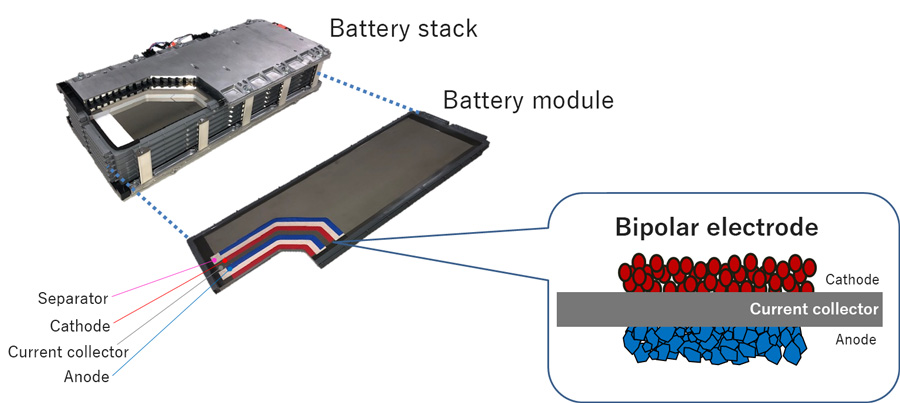
Compared to non-bipolar nickel-hydrogen batteries, bipolar versions consist of fewer current collectors and other parts, enabling them to be made more compact. It is possible to stack a larger number of cells in bipolar nickel-hydrogen batteries than in non-bipolar nickel-hydrogen batteries of the same size.
In addition, since bipolar batteries have a greater active surface area and a simpler construction, there is lower resistance within the battery itself. This enables the flow of larger currents, leading to increased output. To take an example, the bipolar nickel-hydrogen battery equipped to the all-new Aqua has an output approximately two times higher* than the non-bipolar nickel-hydrogen battery equipped to the previous-generation Aqua.
| * | Compared to the previous-generation nickel-hydrogen battery, the all-new bipolar nickel-hydrogen battery delivers 1.5-times greater output per cell, and packs 1.4-times more cells in the same-sized space; together, this leads to a total output increase of approximately two-fold. |
|---|

The all-new Aqua takes advantage of the increased output of its bipolar nickel-hydrogen battery to deliver improved accelerator responsiveness, and realize smooth, powerful acceleration from low speeds. In addition, the speed range at which the all-new Aqua can operate on battery power alone has been expanded, allowing the vehicle to run on electricity alone, without engaging the engine, in a wide variety of urban scenarios.
The benefits of bipolar nickel-hydrogen batteries
- Increased output The battery delivers improved accelerator responsiveness, and an exciting sensation of speed when the accelerator pedal is pressed.
- More compact Less space is required to equip the battery, meaning that bipolar batteries have larger capacities than similar-sized non-bipolar batteries. Vehicles can therefore operate quietly and powerfully on battery power alone, without engaging the engine.

